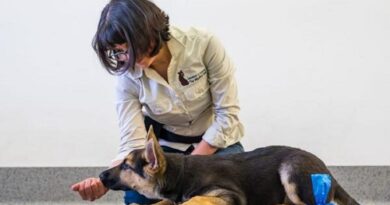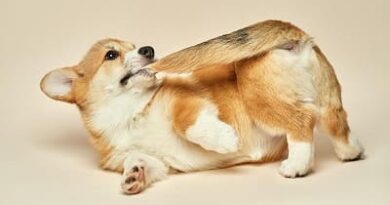How is the shedding of hair in cats?
How is the shedding of hair in cats?
Cat keepers know that their fur will accompany us wherever we go. Both at home and abroad, we can find the occasional hair on our clothes. For a cat to lose hair is absolutely normal and healthy. As in people, cats shed their hair throughout the year, although especially in the spring and summer months, where climatic changes are more pronounced and it is when we observe a greater fall.

What is shedding in cats?
Molting is the renewal of the covering that surrounds the skin of an animal. In cats, shedding consists of the renewal of their fur to make way for the new one that is growing internally.
This is a normal and necessary process. If they do not do it, it would be a problem, and if they do it excessively and even areas devoid of hair appear, it could indicate that the cat has a dermatological, behavioral or feeding problem that requires veterinary attention.
When do cats shed? – Epoch
Cats lose hair throughout the year, but it is true that there are two periods of shedding in cats that we highlight. These times are those that comprise the spring and autumn months , since your body prepares for the changes in temperature and daylight hours that occur during these months. Thus, when faced with the question of «why do cats shed their hair», we see that the answer lies in adaptation to the climate. In this way, the shedding of hair in cats in these times is carried out in the following ways:
- In spring, the moult is much more intense , accounting for up to half of the change they make during the year. This is due to the fact that they shed a large part of their hair to change it for a finer one, in order to better withstand the heat.
- In autumn the opposite happens , the molt is done by shedding those fine hairs and changing them for thicker hairs to prepare to resist the coldest months of the year.
The shedding process is much more noticeable during these months in outdoor cats or those that go out from time to time than in those that always live at home, since in the home the temperature does not usually change so abruptly due to heating and to air conditioning. In these indoor cats, the shedding process is usually more constant over time throughout the year.
First shedding in cats
Baby cats have softer, finer, fluffier or wavy and shorter hair than when they are adults. That first hair will accompany him during his first 5-8 months of age . From that moment is when a baby cat begins to change its hair and does so until it reaches its maximum growth and development. In this way, depending on the breed, the kitten will complete its first change to longer, thicker, stronger and brighter hair. Generally, only the appearance of the coat changes, not its color , although in some cats the coat may darken somewhat as adults.
In this first molt we can see hairs of the little feline throughout the house and it is important to start with the hygiene habits of the fur, getting it used to brushing and even bathing. But do not despair if you see many feline hairs, it is totally healthy and normal, your kitten is growing.
Risks of shedding in cats
Feline caregivers are sometimes alarmed by the extensive shedding their cat is experiencing. In principle, a natural and healthy change should not cause problems . The problem that can cause a high change of hair in a cat is from its grooming.
We all see how our cat grooms itself more than once a day, during this process its tongue picks up loose hairs that are changing, along with others that it pulls out due to the characteristics of its tongue papillae. That is when, after several groomings, it can swallow a lot of hair that will end up in its digestive system. After passing through the stomach, it will reach the intestine where it can accumulate and form hairballs (trichobezoars). This problem is much more frequent even if the cat has long or semi-long hair because the hair fibers take up more space and with less quantity the intestine can be obstructed.
These hairballs can partially or totally obstruct intestinal transit , which will cause clinical signs of a foreign body in the feline, such as vomiting and loss of appetite or anorexia. The solution in many cases is to go through the operating room to remove them.
What to do when a cat sheds its hair?
Due to the problem of hairballs, it is important that we maintain frequent care of our cats’ hair. During the time of shedding this care must be carried out even more frequently and will consist of doing the following:
Brushed
During the year they should be brushed frequently with a special cat brush, a minimum of twice a week for short-haired cats and twice a week for long-haired cats. In the time of shedding, it should be done at least every two days in short-haired ones and every day in long-haired ones. This, in addition to promoting blood circulation that will make hair come out stronger and healthier and will strengthen the connection with your cat, will drag dead hairs and prevent the cat from ingesting them. For this purpose, the most used brush is the well-known furminator for cats, which is a type of escarpidor brush, but there are many more brands that we can find.
Bathed
During the washing of the cat, many dead hairs will be dragged very effectively, which will later be removed by brushing. The ideal is to get a kitten used to it from a young age so that it is not a very stressful or traumatic moment. If your cat becomes hysterical when he sees the water, it is better not to bathe him and work with him to ensure that he ends up associating this moment with a positive experience.
Malta
Giving this product at least once or twice a day during this time can help prevent hairballs from forming. To encourage their ingestion if they don’t like it very much, you can put a little on one of their front legs or on their nose, as this will make them lick the area to clean themselves and ingest it.
Catnip
There are cats that find this herb very attractive and ingest it to purge themselves. If this is the case with your cat, you can try putting it on during this time and improve its intestinal transit by regurgitating accumulated hair that can form a hairball.
In addition, as during the rest of the year, it must be accompanied by a good diet with a complete food that guarantees all the nutrients in their correct proportions so that the feline maintains good health and hair condition. Now, if after knowing all the details of shedding in cats you consider that your cat’s fur loss is not normal, it is best to go to the veterinarian to have it examined, since there are several causes that cause a cat to lose its fur. cat loses a lot of hair .



